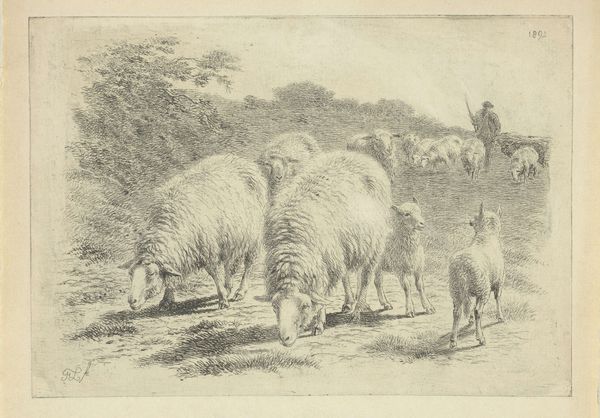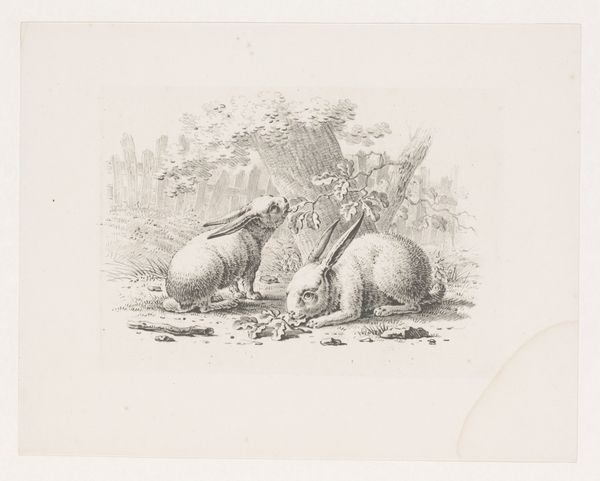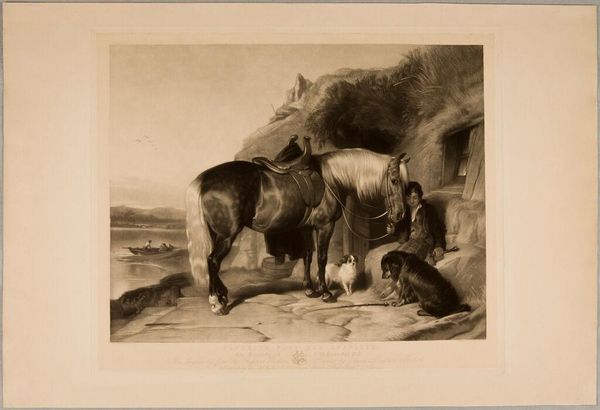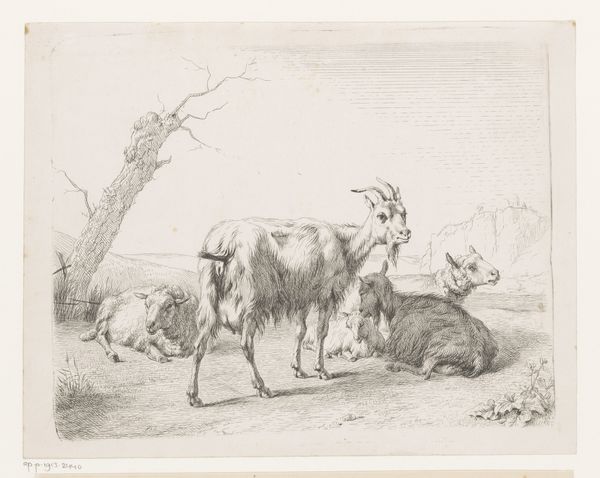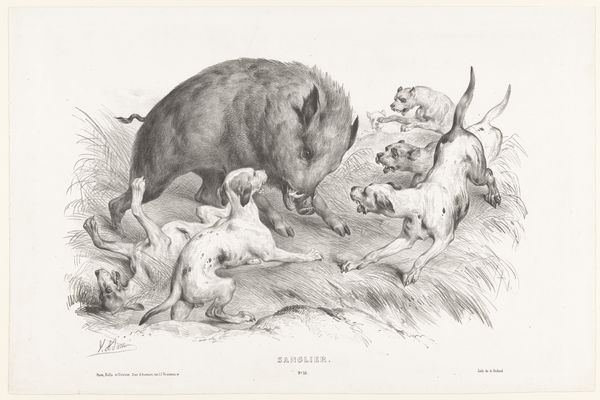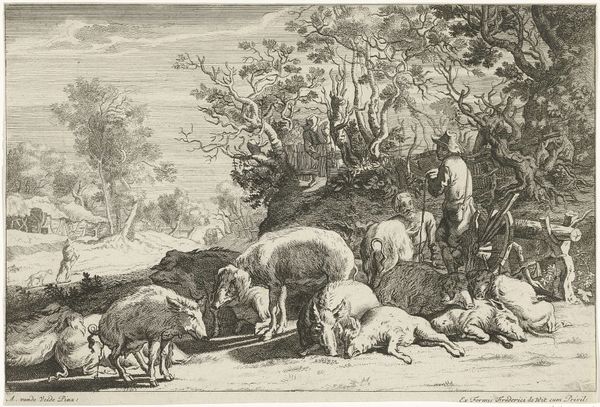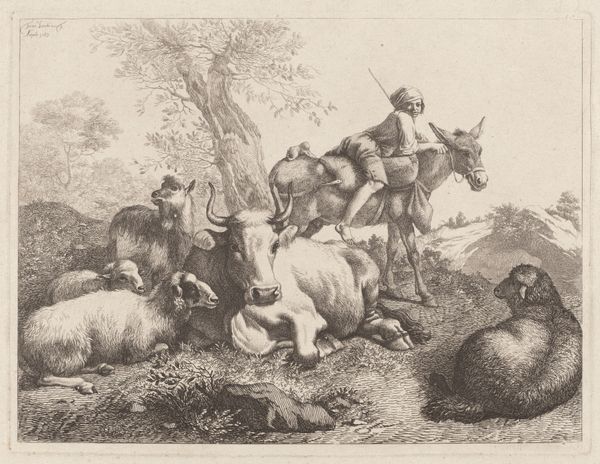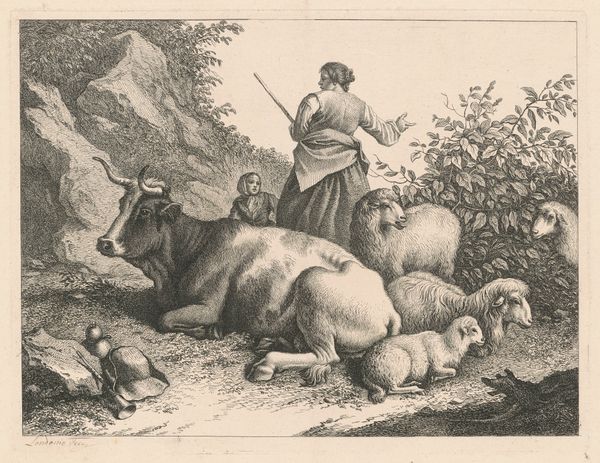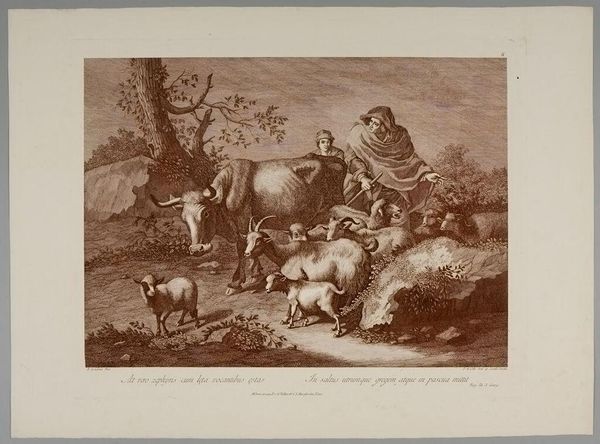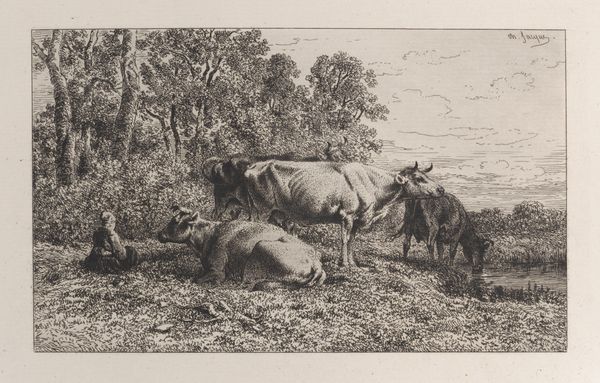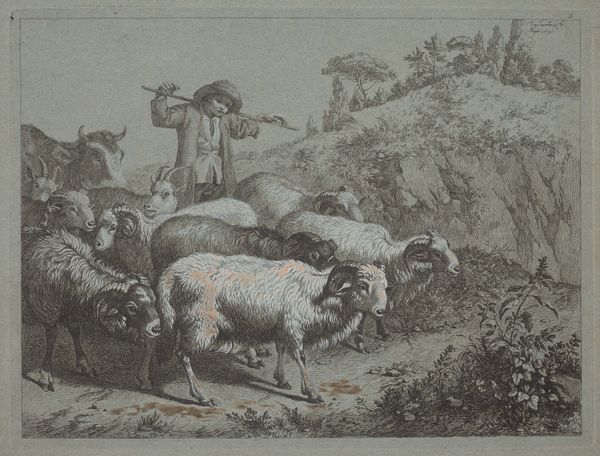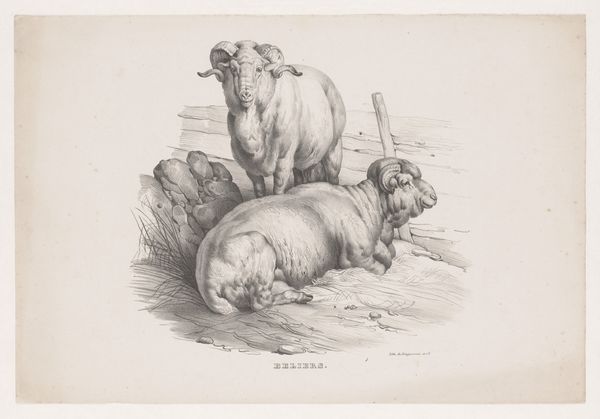
Dimensions: Sheet (Trimmed): 6 15/16 × 10 1/2 in. (17.7 × 26.7 cm) Image: 6 5/8 × 9 3/4 in. (16.9 × 24.8 cm)
Copyright: Public Domain
Editor: So this is Charles Jacque's "The Wombat, from 'Le Magasin Pittoresque'," created in 1864. It's an etching, which I find fascinating. I’m curious, looking at the way it depicts these wombats in what seems to be a natural environment...what catches your eye when you see this piece? Curator: Well, first I consider the "means of production", in this case, the printing press. These images, multiplied, disseminated knowledge and, perhaps, a sense of wonder about the natural world. How does the "mass production" impact its cultural value, in your opinion? Editor: That's interesting! I hadn’t thought about it like that, like it's almost a "commodity of knowledge". Does the relatively simple "engraving" process diminish its artistic merit? Curator: Not at all. I'm more intrigued by the process: The image of the wombats as the "product of labor" mediated through the engraver's skill. Consider the original context—"Le Magasin Pittoresque" – a widely circulated magazine intended to educate and entertain. So, whose "labor" and what resources contributed to the consumption of these images by the public? Editor: Right, there were writers, editors, distributors… It highlights how a piece of art isn’t just about the individual artist, it is also collaborative work with a goal of popular culture. Thank you, now I have so much to think about. Curator: Precisely, by shifting the focus to its materiality and conditions of making, the relationship between art, labor, and the growth of consumer culture becomes tangible, right? It's exciting to look beyond the image and examine the process, the context, to understand its full historical picture.
Comments
No comments
Be the first to comment and join the conversation on the ultimate creative platform.
